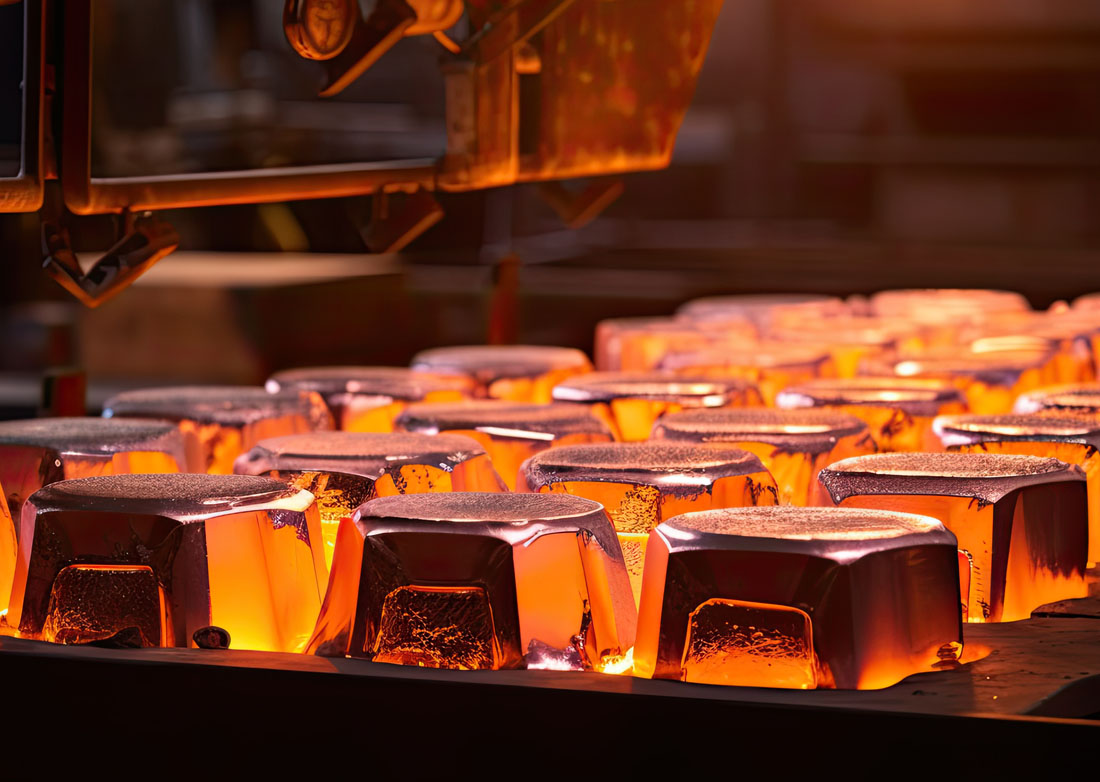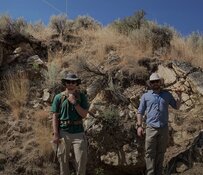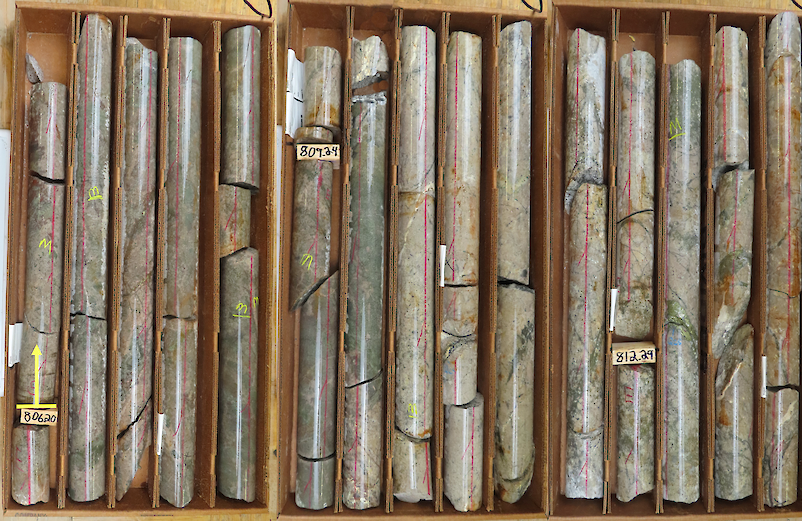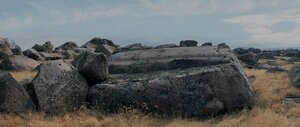TICKERS: JRV, MLM, SCY
Richard Karn: Australian Scandium Could Create New Market
Interview
Source: Special to The Critical Metals Report (8/9/11)
 Two junior explorers in Australia could dominate the world's scandium supply in the next two to three years, according to Richard Karn, managing editor of The Emerging Trends Report. In this exclusive interview with The Critical Metals Report, he paints a picture of a supply-demand loop that feeds on itself and pinpoints the companies that could benefit from the dynamic.
Two junior explorers in Australia could dominate the world's scandium supply in the next two to three years, according to Richard Karn, managing editor of The Emerging Trends Report. In this exclusive interview with The Critical Metals Report, he paints a picture of a supply-demand loop that feeds on itself and pinpoints the companies that could benefit from the dynamic.
The Critical Metals Report: The metal scandium is often grouped with Rare Earth Elements (REEs) because of its chemical similarity with lanthanides. Is it really rare and why is it in demand?
Richard Karn: Scandium occurs at roughly 10 parts per million in the earth's crust, mostly in silicates. Historically, however, for a number of reasons it has been very difficult to extract and process economically.
Like many of the REEs, scandium has some extraordinary properties.
Alloyed with aluminum, it produces one of the lightest, strongest alloys in the world—one with significantly improved durability, plasticity, weldability and corrosion resistance.
Aerospace could be the biggest demand driver because anything that adds strength while saving weight is invaluable. Airbus estimates that aircraft made from welded aluminum scandium zirconium (AlScZr) alloy would be 15% lighter and 15% cheaper to build compared to present materials.
Another promising use for scandium is when Scandium Stabilized Zirconium is used in place of Yttrium Stabilized Zirconium in Solid Oxide Fuel Cells. It lowers operating temperatures, improves performance and extends the operational life of the fuel cell. This is due to scandium's high ionic conductivity.
A third use for scandium that is set to grow is in lighting. Scandium being combusted on the sun is what gives us daylight. Today, lighting on film sets and in some stadium lighting applications employs scandium to mimic this natural light. Next generation, environmentally friendly light bulbs are increasingly using scandium for this reason.
It is also used in high-end sporting goods such as bicycle frames, baseball bats and golf clubs.
However, it is important to keep in mind that today's advanced computer analytics and modeling software allow metallurgists to test combinations of specialty metals more rapidly than ever before, which is leading to the design of ever more efficient products at ever lower prices. In short, these laboratories are finding more uses for scandium every year.
TCMR: Exactly how much scandium is produced and what is the going rate?
RK: Scandium is usually marketed in the form of scandium oxide (Sc2O3), but like many specialty metals, the market is decidedly opaque: USGS data suggests it currently trades for about $1,400/kg.—when you can get it. Anecdotal evidence suggests the price is far, far higher, often multiples of that price.
However, the miniscule amounts of scandium consumed per application would render it utterly price inelastic because the competitive advantage gained from its use at minimal additional cost far outweighs any other considerations—if only sufficient quantities could be reliably delivered to the market to enable its widespread use.
Today's erratic supply, which varies between 2-10 tons per annum (tpa), simply isn't enough to warrant revamping production lines for its use. For example, word on the street is that Bloom Energy, a California company that developed the Bloom Box, a 20,000 lb., solid-oxide fuel cell, would like to get its hands on 30 tons of scandium each year for its next generation fuel cells.
TCMR: Will potential demand for alternative energy and aerospace uses be enough to fuel increased scandium exploration and mining?
RK: What scandium has been available is primarily sourced from those bastions of free market capitalism, Russia, Ukraine and China—until now. Russian stockpiles are thought to be between 12-20 tons, but may be lower.
We think a secure supply of scandium will be developed from the Lucknow, Kokomo and Nyngan deposits in far north Queensland and New South Wales respectively. These Australian deposits are unusually large, high-grade deposits grading in excess of 165 grams per ton (gpt) in relatively isolated mineralogical settings. Natural weathering over millions of years has leached away most other minerals, including yttrium and REEs. The fact that no uranium or thorium is present helps make the scandium economically recoverable.
TCMR: What companies could deliver scandium in consistent enough quantities to nurture a growing industrial demand? And what are the development threats?
RK: Metallica Minerals Ltd. (ASX:MLM) is uniquely positioned to deliver unprecedented tonnages of scandium and to be instrumental in the growth of a whole new market for this remarkable metal. The company has a $50M market cap and is managed by veteran mining director Andrew Gillies. Its NORNICO project, which is a collection of five nickel-cobalt laterite deposits in the historic Greenvale mining district in northern Queensland, has transportation, housing and electric infrastructure in place. Included in this group are the Lucknow and Kokomo scandium deposits. Current plans are for a High Pressure Acid Leach (HPAL) treatment plant that could be in operation as early as the mid-2014, if feasibility, financing and permitting go as planned, with initial gross revenues running in the vicinity of AUD$200M per year.
EMC Metals Corp. (TSX:EMC), which has a $20M market cap, is in a 50-50 joint venture with Jervois Mining Ltd. (ASX:JVR) to develop the Nyngan Gilgai Scandium Project in New South Wales. Intriguingly, EMC's prime asset is the Springer tungsten mine and mill in Nevada, but it has decided to sell the project in order to raise the money to put Nyngan into production. It is currently in the process of doing an independent feasibility study, aerial mapping and Aboriginal heritage review. A 100-200 ton per day (tpd) commercial plant could produce 10-20 tpa of scandium at 99.99% purity as early as mid-2012. The company plans to implement a new recovery process under the supervision of Chief Technology Officer Willem Duyvesteyn.
In terms of development threats, the primary ones as far as we are concerned are related to the markets, not necessarily the companies involved. Scandium, like many specialty metals, is traded off-exchange and pricing is frankly muddy. Because scandium cannot be hedged, arranging project financing is difficult. In this regard, Metallica, with its polymetallic NORNICO project (nickel, cobalt and scandium), has an advantage because two of its three metals are hedgeable, which may make financing less problematic.
Although we believe Metallica and/or EMC could end up largely controlling the world's supply of scandium, there are risks. Both companies are micro caps and in addition to the uncertainty regarding project financing, market timing today is highly uncertain.
But the rewards are simply staggering, for from these two projects a new metal market will be born. Combined, these two micro-cap companies have more than 5,100 tons of scandium metal (7,800 tons of Sc2O3)—enough to ramp up production and supply world markets with ample quantities of this versatile specialty metal for decades to come.
These are literally company-making projects: one way or another, we are convinced these deposits will be developed, which is why we recommended buying both companies. We can sort out the winners and losers later.
TCMR: What are the catalysts investors should be looking for at the company and global level when considering timing?
RK: For Metallica, the results of a bankable feasibility study, scheduled for the middle of next year, will likely be the most immediate driver. For EMC, the sale of the Springer tungsten mine will be a critical milestone in that it will largely provide the company with the funds to move Nyngan significantly closer to production.
TCMR: Any final thoughts on the future of scandium supplies?
RK: The world wants scandium—there just isn't enough of it available today in sufficient quantities for manufacturers to make the switch to using it. The closest parallel we can find is niobium, another metal we like a great deal. Until the Brazilians discovered their massive pyrochlore deposit, niobium was just a curiosity and the only organizations that could afford it were space programs, for whom weight considerations took precedence over everything else. Today, niobium is used extensively, especially in the automotive industry, and is a multi-billion dollar industry controlled by the Brazilians. We see the global scandium market eventually being dominated by the Australians largely on the back of these three deposits.
Richard Karn, managing editor of The Emerging Trends Report, has a broad, multidisciplinary background, industry contacts and a working knowledge of precious and specialty metals, as well as considerable research, analytical and writing experience. He has written for publications ranging from Barron's to Kitco, Fullermoney to Financial Sense online. He is 20 months into a three-year circumnavigation of Australia investigating precious and specialty metal projects.
Want to read more exclusive Critical Metals Report articles like this? Sign up for our free e-newsletter, and you'll learn when new articles have been published. To see a list of recent interviews with industry analysts and commentators and learn more about critical metals companies, visit our Critical Metals Report page.
DISCLOSURE:
1) Sally Lowder of The Gold Report conducted this interview. She personally and/or her family own shares of the following companies mentioned in this interview: None.
2) The following companies mentioned in the interview are sponsors of The Gold Report: None.
3) Richard Karn: I personally and/or my family own shares of the following companies mentioned in this interview: MLM, ASX and EMC. I personally and/or my family am paid by the following companies mentioned in this interview: None.
Richard Karn: Scandium occurs at roughly 10 parts per million in the earth's crust, mostly in silicates. Historically, however, for a number of reasons it has been very difficult to extract and process economically.
Like many of the REEs, scandium has some extraordinary properties.
Alloyed with aluminum, it produces one of the lightest, strongest alloys in the world—one with significantly improved durability, plasticity, weldability and corrosion resistance.
Aerospace could be the biggest demand driver because anything that adds strength while saving weight is invaluable. Airbus estimates that aircraft made from welded aluminum scandium zirconium (AlScZr) alloy would be 15% lighter and 15% cheaper to build compared to present materials.
Another promising use for scandium is when Scandium Stabilized Zirconium is used in place of Yttrium Stabilized Zirconium in Solid Oxide Fuel Cells. It lowers operating temperatures, improves performance and extends the operational life of the fuel cell. This is due to scandium's high ionic conductivity.
A third use for scandium that is set to grow is in lighting. Scandium being combusted on the sun is what gives us daylight. Today, lighting on film sets and in some stadium lighting applications employs scandium to mimic this natural light. Next generation, environmentally friendly light bulbs are increasingly using scandium for this reason.
It is also used in high-end sporting goods such as bicycle frames, baseball bats and golf clubs.
However, it is important to keep in mind that today's advanced computer analytics and modeling software allow metallurgists to test combinations of specialty metals more rapidly than ever before, which is leading to the design of ever more efficient products at ever lower prices. In short, these laboratories are finding more uses for scandium every year.
TCMR: Exactly how much scandium is produced and what is the going rate?
RK: Scandium is usually marketed in the form of scandium oxide (Sc2O3), but like many specialty metals, the market is decidedly opaque: USGS data suggests it currently trades for about $1,400/kg.—when you can get it. Anecdotal evidence suggests the price is far, far higher, often multiples of that price.
However, the miniscule amounts of scandium consumed per application would render it utterly price inelastic because the competitive advantage gained from its use at minimal additional cost far outweighs any other considerations—if only sufficient quantities could be reliably delivered to the market to enable its widespread use.
Today's erratic supply, which varies between 2-10 tons per annum (tpa), simply isn't enough to warrant revamping production lines for its use. For example, word on the street is that Bloom Energy, a California company that developed the Bloom Box, a 20,000 lb., solid-oxide fuel cell, would like to get its hands on 30 tons of scandium each year for its next generation fuel cells.
TCMR: Will potential demand for alternative energy and aerospace uses be enough to fuel increased scandium exploration and mining?
RK: What scandium has been available is primarily sourced from those bastions of free market capitalism, Russia, Ukraine and China—until now. Russian stockpiles are thought to be between 12-20 tons, but may be lower.
We think a secure supply of scandium will be developed from the Lucknow, Kokomo and Nyngan deposits in far north Queensland and New South Wales respectively. These Australian deposits are unusually large, high-grade deposits grading in excess of 165 grams per ton (gpt) in relatively isolated mineralogical settings. Natural weathering over millions of years has leached away most other minerals, including yttrium and REEs. The fact that no uranium or thorium is present helps make the scandium economically recoverable.
TCMR: What companies could deliver scandium in consistent enough quantities to nurture a growing industrial demand? And what are the development threats?
RK: Metallica Minerals Ltd. (ASX:MLM) is uniquely positioned to deliver unprecedented tonnages of scandium and to be instrumental in the growth of a whole new market for this remarkable metal. The company has a $50M market cap and is managed by veteran mining director Andrew Gillies. Its NORNICO project, which is a collection of five nickel-cobalt laterite deposits in the historic Greenvale mining district in northern Queensland, has transportation, housing and electric infrastructure in place. Included in this group are the Lucknow and Kokomo scandium deposits. Current plans are for a High Pressure Acid Leach (HPAL) treatment plant that could be in operation as early as the mid-2014, if feasibility, financing and permitting go as planned, with initial gross revenues running in the vicinity of AUD$200M per year.
EMC Metals Corp. (TSX:EMC), which has a $20M market cap, is in a 50-50 joint venture with Jervois Mining Ltd. (ASX:JVR) to develop the Nyngan Gilgai Scandium Project in New South Wales. Intriguingly, EMC's prime asset is the Springer tungsten mine and mill in Nevada, but it has decided to sell the project in order to raise the money to put Nyngan into production. It is currently in the process of doing an independent feasibility study, aerial mapping and Aboriginal heritage review. A 100-200 ton per day (tpd) commercial plant could produce 10-20 tpa of scandium at 99.99% purity as early as mid-2012. The company plans to implement a new recovery process under the supervision of Chief Technology Officer Willem Duyvesteyn.
In terms of development threats, the primary ones as far as we are concerned are related to the markets, not necessarily the companies involved. Scandium, like many specialty metals, is traded off-exchange and pricing is frankly muddy. Because scandium cannot be hedged, arranging project financing is difficult. In this regard, Metallica, with its polymetallic NORNICO project (nickel, cobalt and scandium), has an advantage because two of its three metals are hedgeable, which may make financing less problematic.
Although we believe Metallica and/or EMC could end up largely controlling the world's supply of scandium, there are risks. Both companies are micro caps and in addition to the uncertainty regarding project financing, market timing today is highly uncertain.
But the rewards are simply staggering, for from these two projects a new metal market will be born. Combined, these two micro-cap companies have more than 5,100 tons of scandium metal (7,800 tons of Sc2O3)—enough to ramp up production and supply world markets with ample quantities of this versatile specialty metal for decades to come.
These are literally company-making projects: one way or another, we are convinced these deposits will be developed, which is why we recommended buying both companies. We can sort out the winners and losers later.
TCMR: What are the catalysts investors should be looking for at the company and global level when considering timing?
RK: For Metallica, the results of a bankable feasibility study, scheduled for the middle of next year, will likely be the most immediate driver. For EMC, the sale of the Springer tungsten mine will be a critical milestone in that it will largely provide the company with the funds to move Nyngan significantly closer to production.
TCMR: Any final thoughts on the future of scandium supplies?
RK: The world wants scandium—there just isn't enough of it available today in sufficient quantities for manufacturers to make the switch to using it. The closest parallel we can find is niobium, another metal we like a great deal. Until the Brazilians discovered their massive pyrochlore deposit, niobium was just a curiosity and the only organizations that could afford it were space programs, for whom weight considerations took precedence over everything else. Today, niobium is used extensively, especially in the automotive industry, and is a multi-billion dollar industry controlled by the Brazilians. We see the global scandium market eventually being dominated by the Australians largely on the back of these three deposits.
Richard Karn, managing editor of The Emerging Trends Report, has a broad, multidisciplinary background, industry contacts and a working knowledge of precious and specialty metals, as well as considerable research, analytical and writing experience. He has written for publications ranging from Barron's to Kitco, Fullermoney to Financial Sense online. He is 20 months into a three-year circumnavigation of Australia investigating precious and specialty metal projects.
Want to read more exclusive Critical Metals Report articles like this? Sign up for our free e-newsletter, and you'll learn when new articles have been published. To see a list of recent interviews with industry analysts and commentators and learn more about critical metals companies, visit our Critical Metals Report page.
DISCLOSURE:
1) Sally Lowder of The Gold Report conducted this interview. She personally and/or her family own shares of the following companies mentioned in this interview: None.
2) The following companies mentioned in the interview are sponsors of The Gold Report: None.
3) Richard Karn: I personally and/or my family own shares of the following companies mentioned in this interview: MLM, ASX and EMC. I personally and/or my family am paid by the following companies mentioned in this interview: None.



































